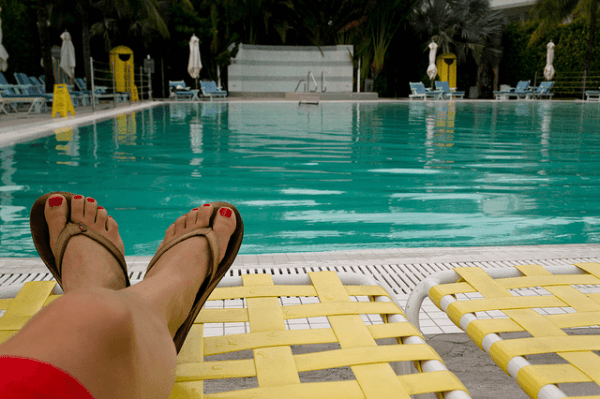Summertime usually means time to cool off at the beach or the pool. But after a relaxing day in the water, make sure to dry off and bring a change of clean clothes lest your fun in the sun turns into some summertime sadness. A combination of the chlorinated water in swimming pools, the tighter, less breathable fabrics of most swimwear, and the common practice of staying in a wet swimsuit for too long increase the risk for yeast infections by creating a wet, warm environment—perfect for yeast growth.
While inconvenient and bothersome, yeast infections (genital candidiasis) are common and typically harmless. Yeast naturally exists in the vagina, but in small amounts regulated carefully by the lactobacillus bacteria that live in the vaginal environment as well. The chlorinated pool water actually acts as an antibiotic, killing many of the bacteria living in the vagina and reducing the acidity of the vaginal environment. Normally, the vagina is acidic as a result of the lactic acid produced by normal vaginal lactobacillus bacteria; chlorine kills the bacteria, raising the vaginal pH above the normal levels. As the vagina rebalances itself, the lack of normal vaginal bacteria allows the yeast to overgrow beyond its natural levels, causing a yeast infection. Coupling this with a warm, wet environment further increases yeast growth. Other causes of yeast infections include antibiotics, high estrogen levels, and diabetes.
Image Source: K Sass
Typical symptoms of yeast infections include itching and irritation of the vulva as well as a burning sensation during urination or sex. They also cause abnormalities in vaginal discharge; discharge can become thick and look white (like cottage cheese) or become more runny and watery than normal. Interestingly, men also get yeast infections, though at a much lower rate than women. For men, symptoms include redness or small white spots as well as itching, irritation, and burning of the penis.
Yeast infections are treated with antifungal medications available as topical or oral treatments. Many people choose to self-treat yeast infections using over-the-counter medication, but physicians recommend getting it checked out first to rule out other possibilities, such as other dangerous vaginal infections or sexually transmitted diseases (STDs). In addition, you should talk with your doctor about the medication to avoid complications; oral antifungals can interfere with other medications like anticoagulants, and antifungal creams actually weaken latex, which can cause condoms or other birth control methods to break or fail.
If you suffer from recurrent yeast infections, talk to your doctor since there may be an underlying cause involving your immune system. Usually though, staying clean and dry during the summer is the easiest way to prevent yeast infections. So next time you’re at the pool, make sure to bring a change of clothes and a clean towel to dry off and protect yourself!
Feature Image Source: these rainbows didn’t know how much walking they’d do in the next 2 weeks by Peyri Herrera










